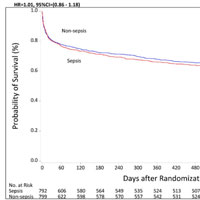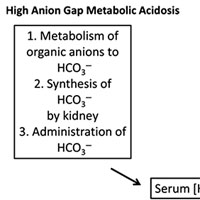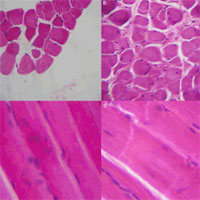Tag: ICU

Hospitalists Are the New Intensivists
Intensivists may get all the credit, but over 37,000 hospitalists provide much of the care for ICU patients in the U.S. According to a recent survey, they often do it without the presence or availability of intensivists for... read more

Increasing the Number of Medical Emergency Calls Does Not Improve Hospital Mortality
With adjustment for patient factors, illness, and comorbidities, increased emergency calling rates were not associated with reduced in-hospital mortality. Efforts to increase calling rates do not seem warranted. We studied... read more

Health-related Outcomes of Critically Ill Patients With and Without Sepsis
Critically ill patients with sepsis have higher healthcare resource use and costs but similar survival and HRQoL compared to matched patients without sepsis. We conducted a primary propensity score matched analysis of patients... read more

Treatment of Acute Non-Anion Gap Metabolic Acidosis
Acute non-anion gap metabolic acidosis is now recognized to be as a common cause of metabolic acidosis, particularly in the ICU. Further examination of its impact on cellular function and clinical outcome are needed. Most... read more

Evaluation of a strategy for enrolling the families of critically ill patients in research using limited human resources
Family members were recruited for more than one third of eligible patients, and >90% of approached consented to participate. There are important demographic differences between patients with vs without an enrolled family... read more

Collective Quality Improvement in the Pediatric Cardiology Acute Care Unit
Collaborative quality improvement and learning networks have amended healthcare quality and value across specialities. Motivated by these successes, the Pediatric Acute Care Cardiology Collaborative (PAC3) was founded in... read more

Survival outcomes after prolonged ICU length of stay among trauma patients: The evidence for never giving up
Prolonged intensive care unit length of stay (ICU-LOS) is associated with high mortality for medical and surgical patients. Existing literature suggests that this may not be true for trauma patients.The results reveal that... read more

Peer Support in Critical Care
Peer support appeared to reduce psychologic morbidity and increase social support. The evidence for peer support in critically ill populations is limited. There is a need for well-designed and rigorously reported research... read more

The Impact of Enhanced Critical Care Training and 24/7 (Tele‐ICU) Support on Medicare Spending and Postdischarge Utilization Patterns
Innovations in workforce training and technology specific to the ICU may be useful in addressing the shortage of intensivist physicians, yielding benefits to patients and payers. Implementation of the advanced practice provider... read more

The Value of 24/7 In-House ICU Staffing 24/7 Intensivist in the ICU
Staffing of high-volume, high-intensity ICUs with 24 × 7 intensivist coverage facilitates the system changes, which allow ICU teams to provide 24 × 7 critical care.... read more

Beyond Bleeps and Alarms: Live Music by the Bedside in the ICU
Live music by the bedside is an additional, simple and inexpensive factor in the open ICU, aiming at reducing the incidence of delirium and transform the critical care setting into a more familiar and domestic environment.... read more

Acute Skeletal Muscle Wasting in Critical Illness
Among these critically ill patients, muscle wasting occurred early and rapidly during the first week of critical illness and was more severe among those with multiorgan failure compared with single organ failure. These findings... read more

Pressure ulcers in ICU patients: Incidence and clinical and epidemiological features
Pressure ulcers in ICU patients: Incidence and clinical and epidemiological features: A multicenter study in southern Brazil. The main objective is to evaluate the incidence and risk factors of pressure ulcers (PU) in adult... read more

Antibiotic Decisions in the ICU: A Dragon’s Tale
Medical decision-making about antibiotic use in critically ill patients is challenging and complex. The need for antibiotic stewardship requires judicious prescription and choice of antimicrobials, as the need for effective... read more








